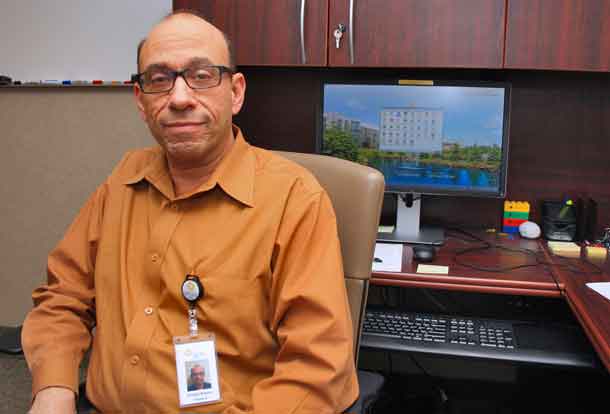

by Graham Strong
Travelling for health care is a given for many people living in Northwestern Ontario, though technology is helping reduce distance barriers to care. Dr. Abraham (Rami) Rudnick, who became the Vice President of Research for the Thunder Bay Regional Health Sciences Centre and the Chief Scientist of the Thunder Bay Regional Health Research Institute in January 2017, wants to find even more ways of bringing health care to the patient through the use of technology.
“Mobile and remote access can help improve health outcomes considerably. We want to do more, and do it in a more timely fashion: early detection, early intervention. Technology can help us do that as close to home as possible,” Rami said.
Northwestern Ontario tends to have poorer health outcomes than provincial averages for a number of reasons, and distance to health care services is a major factor. Although it’s not a unique problem (for example, Australia has a similar challenge), it is one that requires custom solutions. Today, videoconferenced family doctor and specialist appointments are becoming more common, and there are other tools to connect patients with doctors and other health care providers right from the patient’s home.
Rami wants to consider expanding the use of Internet-based tools including apps to help improve access to health care. “We can provide more care within remote communities,” he said. However, technology isn’t the whole solution. Instead, it is a tool to be used within a wider system of care. “We also have to look at how we can better use human resources.”
Although technology can improve access to care, there is a risk of imposing technology on patients, Rami said. That is particularly true when it comes to Indigenous Health. “The use of technology needs to be fully collaborative and based on the individual’s and community’s values, beliefs, and preferences.”
Education will be a key part of successfully integrating any use of technology, by care providers and learners as much as by patients.
“Research advancement is an opportunity to help health care providers to do research as well as to evaluate health care critically. That’s an example where partnerships with the Northern Ontario School of Medicine, Lakehead University, Confederation College, and others would work well.”
The goal would be to set up a collaborative remote health care system, easily accessible by patients and easily used by providers. Established alternatives such as satellite communication can be considered for communities that do not yet have access to broadband Internet.
“In the past, people talked about a hub-and-spoke model, but I don’t think that’s the right metaphor. I and others think about it more as a network. Some nodes may be larger in size, such as Thunder Bay, but there is fabulous research going on in some smaller nodes. Sioux Lookout, for example, has many health research projects.”
Rami has experience developing this type of remote health care model. As the Medical Director of Mental Health and Substance Use services at the Vancouver Island Health Authority, he helped guide the development of a freely available mental health promotion mobile app called BoosterBuddy, which supports youth and others who may be struggling with mental health challenges. He regularly involves patients and their communities in such research and development, which is part of the growing trend in health research in Canada and worldwide.
The BoosterBuddy app is just one example of how technology can help patients feel more connected. Technology can also help connect health care providers throughout the region, including researchers.
“It’s all about knowledge exchange and learning from each other.”






